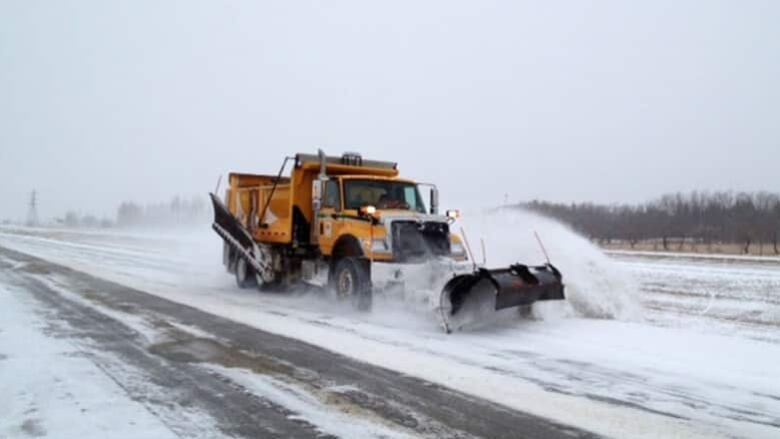Road rules: Staying safe around snow plows
Snow plows slow traffic, use 10 kilometres as a guideline to pull over

Most Saskatchewan drivers have been stuck in traffic on the highway, and at the front of the linecausing the hold upis a big yellow snow plow.
As winter covers roads with ice and snow, the large, slow-moving vehicles hit the streets to remove snow, add salt andsand, and perform surveillance work on major highways in Saskatchewan.
"We try to have snow cleared from the driving lanes within six hours at the end of the storm," said Doug Wakabayashi with the Ministry of Highways of Infrastructure.
Wakabayashi saidthat whenapproaching a snow plow, there are a few things drivers should remember.
Watch for blue lights
A flashing blue light signals that the snow plow is active and distinguishes it from other vehicles on the road that use amber lights.
Wakabayski saidthe blue light helps the snow plow stand out and makes it more visible.
The blue light will be on even when the snow plow is doing surveillance on the highway because the plow could drop suddenly to remove a snow drift.
To pass...or not too pass
Wakabayashi saidit is illegal in Saskatchewan to pass a snow plow exceeding 60 kilometres, similar to emergency vehicles.
The plows can create mini blizzards around them as they move down the highway andobscure a driver's vision of the road.
"It's very difficult to see what is coming towards you when you pass," Wakabayashi said.
"One of the issues we do have with collisions with snow plows is on four lane divided highways. Quite often what happens is people see the snow cloud and pull over to the passing lane assuming that the snow plow is in the driving lane and end up rear-ending the snow plow that is clearing the passing lane."
While you're stuck behind a snow plow, you want to stay back, maintaining a safe distance.
Wakabayahi saidthe large and heavy plow blades can catch on something causing the truck to veer unexpectedly.
Be patient
To help ease traffic, snow plow operators can pull over every 10 kilometres to let vehicles pass.
However, this policyis just a guideline and it's up to the snow plow driverto determine when they think it's safe to pull over. They might wait until the end of a load of sand.
"Where and when they decide to pull over, the snow plow operator has to take into account the safety of him or herself, and as well as the motoring public," Wakabayashi said.
"One thing you have to keep in mind is the distance in time it takes to travel 10 kilometres at 100 kilometres (per hour)as opposed to 60 kilometres, for example, is four mintues."












_(720p).jpg)


 OFFICIAL HD MUSIC VIDEO.jpg)
.jpg)



























































































